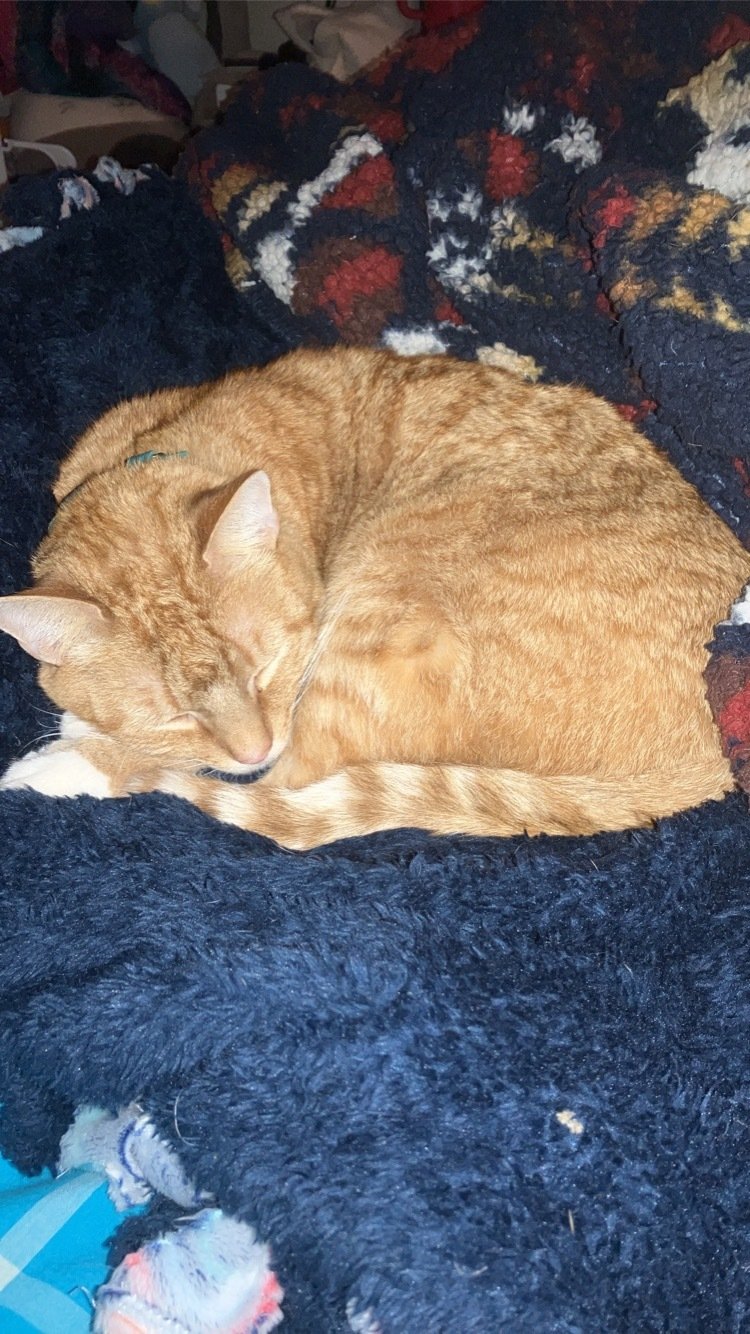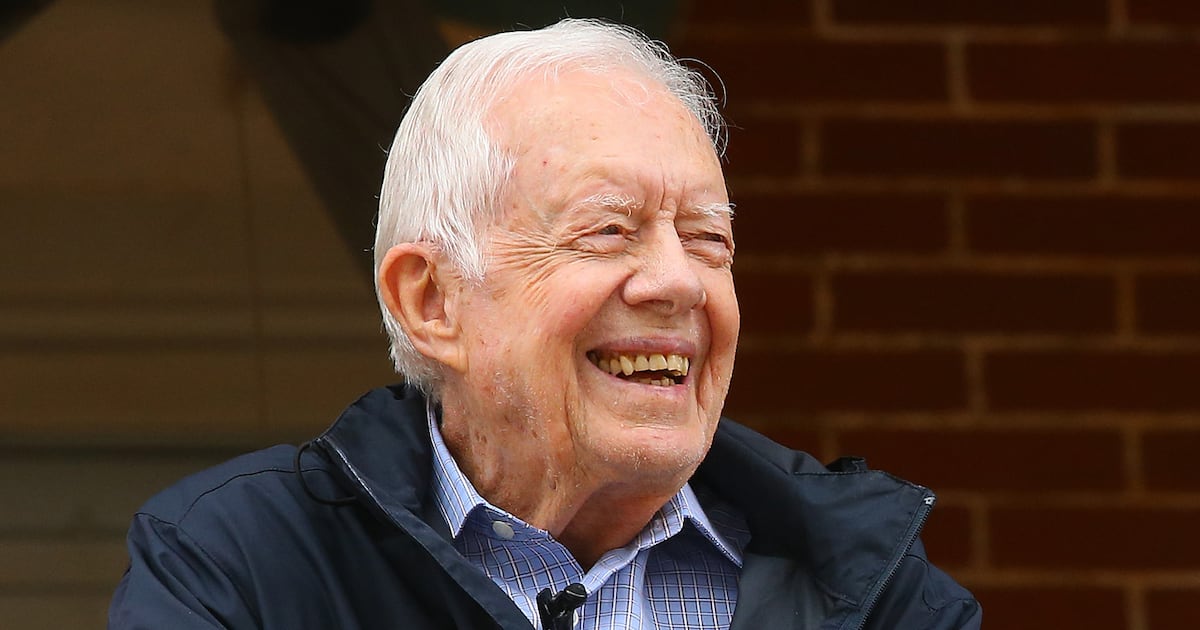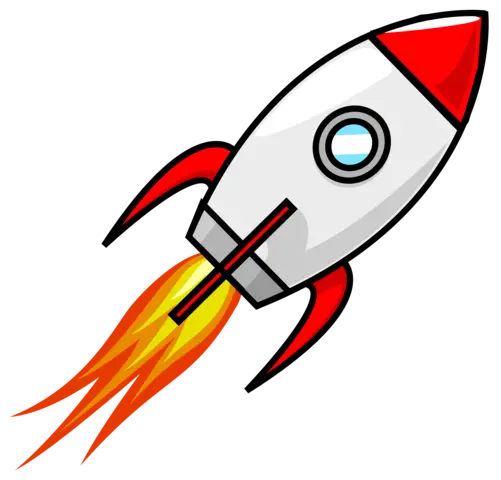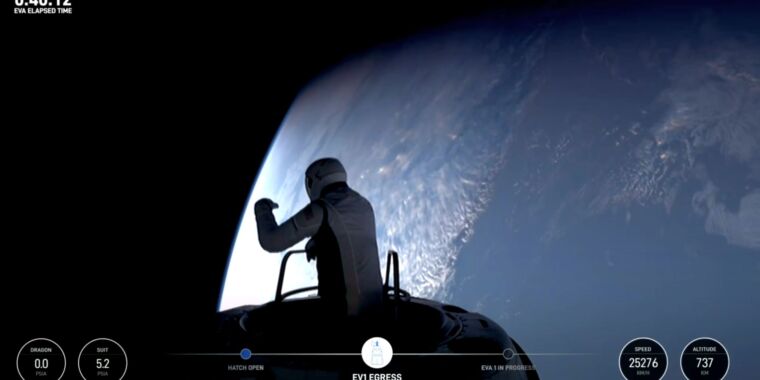- 42 Posts
- 90 Comments
Every store needs a man zone

 16·1 month ago
16·1 month agoHad a previously banned user from a discord I moderate join back months later with my wife’s name as their username and a photo of her as the pfp

 5·2 months ago
5·2 months agosmoke weed, drink, jerk off, and play vrchat!
Alternatively spend New Year’s Eve with friends in vrchat, drinking beer from your fridge, and having your bed only 20 feet away in the next room
So technically 32 Cygni is just the bright star in the pic, and the rest of it is just hydrogen gas floating around in space. The constellation Cygnus has a ton of this hydrogen-alpha gas floating around, and I kinda just pointed at a semi-random spot in the constellation to get a pic. Although this was taken with an Ha filter, the stars are true color RGB, and I mapped the Ha channel to red so it closely resembles the actual color of hydrogen-alpha. Also for those curious here is a starless version that better shows the faint nebulosity/structures. Also pls ignore the crunchiness around 32 Cyg itself, it’s an artifact of my camera’s microlensing + the star removal program I use. Captured over like a dozen nights in December 2024 from a bortle 9 zone.
Places where I host my other images:
-
TPO 6" F/4 Imaging Newtonian
-
Orion Sirius EQ-G
-
ZWO ASI1600MM-Pro
-
Skywatcher Quattro Coma Corrector
-
ZWO EFW 8x1.25"/31mm
-
Astronomik LRGB+CLS Filters- 31mm
-
Astrodon 31mm Ha 5nm, Oiii 3nm, Sii 5nm
-
Agena 50mm Deluxe Straight-Through Guide Scope
-
ZWO ASI-290mc for guiding
-
Moonlite Autofocuser
Acquisition: 29 hours 18 minutes (Camera at -15°C), unity gain
-
Ha - 161x600"
-
R - 51x60"
-
G - 59x60"
-
B - 48x60"
-
Darks- 30
-
Flats- 30 per filter
Capture Software:
- Captured using N.I.N.A. and PHD2 for guiding and dithering.
PixInsight Preprocessing:
-
BatchPreProcessing
-
StarAlignment
-
Blink
-
ImageIntegration per channel
-
DrizzleIntegration (2x, Var β=1.5)
-
Dynamic Crop
-
DynamicBackgroundExtraction
duplicated each image and removed stars via StarXterminator. Ran DBE with a shitload of points to generate background model. model subtracted from original pic using the following PixelMath (math courtesy of /u/jimmythechicken1)
$T * med(model) / model
Narrowband Linear:
-
Blur and NoiseXTerminator
-
StarXterminator to completely remove stars from each the image
-
HistogramTransformation to stretch nonlinear (calling this the Ha image now)
Broadband/RGB linear:
-
ChannelCombination to make color image from R G and B stacks
-
StarX (correct only)
-
SpectrophotometricColorCalibration
(duplicated image at this point, to be used for stars only processing later)
-
StarX to completely remove stars (at this point it’s just background, with a little bit of signal in the R channel)
-
Blended unstretched Ha image into the red (and a little bit of the blue channel) with this pixelmath:
R = $T+B*(Ha- med(Ha))
G = $T
B = $T+B*0.2*(Ha- med(Ha))
honestly can’t remember what I used for the B constant, but the default is 2 in my pixelmath ¯\_(ツ)_/¯
-
HistogramTransformation to stretch nonlinear (calling this the Starless image now)
Stars only processing:
-
HSV repair to fix blown out star cores
-
StarXterminator to generate an image containing only the stars (without any background)
-
ArcsinhStretch + Histogramtransformation to stretch nonlinear (Calling this the Stars image now)
Nonlinear:
-
LRGBCombination to add the stretched Ha image to the stretched Starless image as a luminance layer
-
NoiseXterminator
-
Background neutralization
-
Several curve transformations to adjust lightness, contrast, saturation, color balance, etc
-
LocalHistogramEqualization
-
Another round of noiseX
-
Pixelmath to add in the stretched RGB Stars image from earlier
This basically re-linearizes the two images, adds them together, and then stretches them back to before. More info on it here)
mtf(.005,
mtf(.995,Stars)+
mtf(.995,Starless))
-
few more curve adjustments
-
FastRotation 180 degrees (pic was originally upside down)
-
DynamicCrop again (just a little bit)
-
Resample to 60%
-
Annotation
-
PSVR 2 headset has a haptic thing in the forehead

 4·2 months ago
4·2 months agoOne I used to run, /r/astrophotogramemes, is still private. Had about 1k subs before the protests. On /r/astrophotography we basically left it unmoderated for almost a year before new mods came in
I decided to do a deep dive into just the core of the Heart Nebula itself. Mellotte 15 is the name for the bright structure in the image, but the rest of the nebula itself is pretty extensive, and features the nearby soul nebula. IMO the uncropped heart nebula looks more like a chode with huge balls, but I can kinda see where it got it’s heart name… Captured over 8 nights in November 2024 from a bortle 9 zone.
Places where I host my other images:
-
TPO 6" F/4 Imaging Newtonian
-
Orion Sirius EQ-G
-
ZWO ASI1600MM-Pro
-
Skywatcher Quattro Coma Corrector
-
ZWO EFW 8x1.25"/31mm
-
Astronomik LRGB+CLS Filters- 31mm
-
Astrodon 31mm Ha 5nm, Oiii 3nm, Sii 5nm
-
Agena 50mm Deluxe Straight-Through Guide Scope
-
ZWO ASI-290mc for guiding
-
Moonlite Autofocuser
Acquisition: 29 hours 50 minutes (Camera at -15°C), unity gain
-
Ha - 58x600"
-
Oiii - 62x600"
-
Sii - 59x600"
-
Darks- 30
-
Flats- 30 per filter
Capture Software:
- Captured using N.I.N.A. and PHD2 for guiding and dithering.
PixInsight Preprocessing:
-
BatchPreProcessing
-
StarAlignment
-
Blink
-
ImageIntegration per channel
-
DrizzleIntegration (2x, Var β=1.5)
-
Dynamic Crop
-
DynamicBackgroundExtraction
duplicated each image and removed stars via StarXterminator. Ran DBE with a shitload of points to generate background model. model subtracted from original pic using the following PixelMath (math courtesy of /u/jimmythechicken1)
$T * med(model) / model
Narrowband Linear:
-
Blur and NoiseXTerminator
-
made SHO image and extracted stars to be processed separately
-
StarXterminator to completely remove stars from each Ha, Oiii, and Sii image
-
HistogramTransformation to stretch nonlinear
Stars only image:
-
SpectrophotometricColorCalibration (narrowband working mode)
-
HSV repair
-
arcsinhstretch
-
scnr > invert > scnr > invert to remove greens and magentas
-
HistogramTransformation
-
(combined with starless pic later on)
Nonlinear:
-
PixelMath to combine monochrome Ha Oiii and Sii images into a color image with SHO --> RGB, respectively
-
HistogramTransformation to adjust red green and blue color channels separately (basically stretched R and B, and toned the G down some)
-
LRGBCombination using stretched Ha as luminance
-
DeepSNR
-
Shitloads of Curve Transformations to adjust lightness, hues, contrast, saturation, etc
-
Clone stamp to remove one weird small blue speck near the core of the nebula (might’ve just clipped the colors a little too much in the histogram adjustments above^)
-
LocalHistogramEqualization (two rounds of this. one at kernel radius 16 for small scale detail, and one at 500 for large structures)
-
More curves
-
DarkStructureEnhance script (0.15 amount)
-
Pixelmath to add in the stretched RGB stars only image from earlier
This basically re-linearizes the two images, adds them together, and then stretches them back to before. More info on it here)
mtf(.005,
mtf(.995,Stars)+
mtf(.995,Starless))
-
some more curves
-
One more round of noiseX for small scale noise reduction
-
DynamicCrop in on just the core region
-
Resample to 80%
-
Annotation
-
Yea I fuck**g hate it
Still shooting in Cygnus…
Though I think IC1318/γ Cyg can be used to describe most of the nebulosity around the star Sadr, stellarium has it directly over the bright nebula in this image. Overall I’d consider it an improvement over my last go at it back in 2020. Captured over 12 nights from Oct-Nov 2024 from a bortle 9 zone.
Places where I host my other images:
-
TPO 6" F/4 Imaging Newtonian
-
Orion Sirius EQ-G
-
ZWO ASI1600MM-Pro
-
Skywatcher Quattro Coma Corrector
-
ZWO EFW 8x1.25"/31mm
-
Astronomik LRGB+CLS Filters- 31mm
-
Astrodon 31mm Ha 5nm, Oiii 3nm, Sii 5nm
-
Agena 50mm Deluxe Straight-Through Guide Scope
-
ZWO ASI-290mc for guiding
-
Moonlite Autofocuser
Acquisition: 25 hours 40 minutes (Camera at -15°C), unity gain
-
Ha - 50x600"
-
Oiii - 57x600"
-
Sii - 47x600"
-
Darks- 30
-
Flats- 30 per filter
Capture Software:
- Captured using N.I.N.A. and PHD2 for guiding and dithering.
PixInsight Preprocessing:
-
BatchPreProcessing
-
StarAlignment
-
Blink
-
ImageIntegration per channel
-
DrizzleIntegration (2x, Var β=1.5)
-
Dynamic Crop
-
DynamicBackgroundExtraction
duplicated each image and removed stars via StarXterminator. Ran DBE with a shitload of points to generate background model. model subtracted from original pic using the following PixelMath (math courtesy of /u/jimmythechicken1)
$T * med(model) / model
Narrowband Linear:
-
Blur and NoiseXTerminator
-
made SHO image and extracted stars to be processed separately
-
StarXterminator to completely remove stars from each Ha, Oiii, and Sii image
-
HistogramTransformation to stretch nonlinear
Stars only image:
-
SpectrophotometricColorCalibration (narrowband working mode)
-
HSV repair
-
arcsinhstretch
-
scnr > invert > scnr > invert to remove greens and magentas
-
HistogramTransformation
-
(combined with starless pic later on)
Nonlinear:
-
PixelMath to combine monochrome Ha Oiii and Sii images into a color image with SHO --> RGB, respectively
-
slight SCNR (bright areas protected with Ha mask)
-
Some curves to adjust colors
-
LRGBCombination using stretched Ha as luminance (accidentally left that Ha mask on from earlier so it applied more to the bright parts, and honestly turned out nicer than applying the Ha luminance to the entire image)
-
Shitloads of Curve Transformations to adjust lightness, hues, contrast, saturation, etc
-
DeepSNR
-
MLT for small scale chrominance noise reduction
-
DarkStructureEnhance script
-
LocalHistogramEqualization
-
more curves
-
invert > slight scnr (masked) > invert to remove some background magentas
-
even more curves
-
Pixelmath to add in the stretched RGB stars only image from earlier
This basically re-linearizes the two images, adds them together, and then stretches them back to before. More info on it here)
mtf(.005,
mtf(.995,Stars)+
mtf(.995,Starless))
-
Resample to 65%
-
Annotation
-
Decided to just shoot a semi-random part of Cygnus. The large extended Ha region in Cygnus is unofficially called Smaug, and this is a photo specifically of the area around LBN 325/326. The nebulosity in this pic is false color, but the stars are true color RGB. I really love how this turned out with the narrowband palette, especially with the Oiii region on the right side looking almost like a true color Ha region. Captured over a shitload of nights from Aug-Oct 2024 from a bortle 9 zone.
Places where I host my other images:
-
TPO 6" F/4 Imaging Newtonian
-
Orion Sirius EQ-G
-
ZWO ASI1600MM-Pro
-
Skywatcher Quattro Coma Corrector
-
ZWO EFW 8x1.25"/31mm
-
Astronomik LRGB+CLS Filters- 31mm
-
Astrodon 31mm Ha 5nm, Oiii 3nm, Sii 5nm
-
Agena 50mm Deluxe Straight-Through Guide Scope
-
ZWO ASI-290mc for guiding
-
Moonlite Autofocuser
Acquisition: 57 hours 40 minutes (Camera at -15°C), NB exposures at unity gain and BB at half unity
-
Ha - 111x600"
-
Oiii - 127x600"
-
Sii - 94x600"
-
R - 48x60"
-
G - 48x60"
-
B - 44x60"
-
Darks- 30
-
Flats- 30 per filter
Capture Software:
- Captured using N.I.N.A. and PHD2 for guiding and dithering.
PixInsight Preprocessing:
-
BatchPreProcessing
-
StarAlignment
-
Blink
-
ImageIntegration per channel
-
DrizzleIntegration (2x, Var β=1.5)
-
Dynamic Crop
-
DynamicBackgroundExtraction
duplicated each image and removed stars via StarXterminator. Ran DBE with a shitload of points to generate background model. model subtracted from original pic using the following PixelMath (math courtesy of /u/jimmythechicken1)
$T * med(model) / model
Narrowband Linear:
-
Blur and NoiseXTerminator
-
StarXterminator to completely remove stars (to be later replaced by the RGB ones)
-
HistogramTransformation to stretch nonlinear
RGB Linear:
-
ChannelCombination to combine monochrome R G and B frame into color image
-
SpectroPhotometricColorCalibration
-
BlurXTerminator for star sharpening (correct only)
-
HSV Repair
-
StarXterminator to generate a stars-only image
-
ArcsinhStretch + HT to stretch nonlinear (to be combined with starless narrowband image later)
-
Invert > SCNR > invert to remove magentas
-
Curves to saturate the stars a bit more
Nonlinear:
- PixelMath to combine monochrome Ha Oiii and Sii images into a color image with Jimmy’s Royale Palette
R = 0.3*Oiii+0.7*(Oiii^~(0.7*Ha+0.3*Sii))^1.2
G = ((Oiii*Ha)^~(Oiii*Ha))*Ha + ((Oiii*Ha)^(Oiii*Ha))*Sii
B = 0.9*Sii+Ha-Oii
-
NoiseX again
-
Shitloads of Curve Transformations to adjust lightness, hues, contrast, saturation, etc
-
more curves
-
Extract L --> LRGBCombination for chrominance noise reduction
-
even more curves
-
Pixelmath to add in the stretched RGB stars only image from earlier
This basically re-linearizes the two images, adds them together, and then stretches them back to before. More info on it here)
mtf(.005,
mtf(.995,Stars)+
mtf(.995,Starless))
-
Couple final curves
-
Resample to 60%
-
Annotation
-
0, I’m just raw dogging /all (minus whomever .world is defederated from)
Med student here. I probably would’ve failed a lot of in house exams/step 1 if I didn’t use anki. IMO it’s best for solidifying knowledge and quick recall of facts, but doing a shitload of practice questions is the best way to apply what you’ve memorized through anki (this last bit is most applicable to med school/mcat prep).
Really the main cost with it is your time. If you miss a day or two it can be daunting to get back in the groove and work on your review backlog. I usually have enough downtime during the day and time on the shitter to get through my reviews + whatever new cards I add. Anki itself is free but they do have a paid iOS app that I got just to use whenever I had a few mins of spare time.
As for the learning curve, this will vary if you’re making your own cards vs using a premade deck for a large standardized exam. Once you know the formatting it isn’t that difficult to make cloze cards for what you’re trying to learn.

 18·4 months ago
18·4 months agoThe starliner astronauts are still up there (and will be until they return on the crew 9 capsule in February). This is the crew that went up before them returning to earth

 11·4 months ago
11·4 months agoHoly fuck they did it

 2·5 months ago
2·5 months agoMildew is ‘eepin











Might be some bug in automation?
https://old.reddit.com/r/ModSupport/comments/1ii67mt/_/mb3fewv